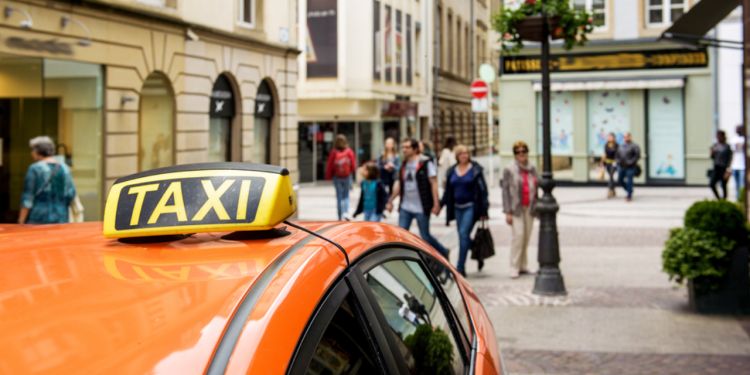
When it comes to transportation options in Luxembourg, there's a diverse range to suit different budgets and preferences. You can choose from taking a taxi, using free public transportation, driving a car, or cycling. Here's an overview of the transportation choices available in the Grand Duchy.
Public transport in Luxembourg
Luxembourg boasts an excellent public transport system with an extensive network of railway lines connecting major cities and even the smallest towns. Buses serve a significant portion of the population, and some municipalities offer additional public transport services within their areas. You can find all the information about public transport timetables, fares, and routes from the Mobility Center.
Good to know:
Since 2020, the entire territory of Luxembourg offers free access to all forms of public transportation, including buses, trains, and trams.
Bus travel in Luxembourg
The public transport network in Luxembourg is divided into four bus sub-networks:
- RGTR, covering the entire country;
- TICE (Syndicat des Tramways Intercommunaux du Canton d'Esch-sur-Alzette), serving 9 municipalities in the Terres Rouges region;
- AVL (Autobus de la Ville de Luxembourg), providing urban transport within Luxembourg City;
- CityBus networks, offering flexible travel options within municipalities in addition to fixed-time bus routes.
Some towns have a "Late Night Bus" service, ensuring that night owls can easily return home after a night out. Additionally, certain municipalities offer a "Night Rider" service, a reservation-based nighttime transportation option. The communes also provide free school transportation for primary education, while more than 700 buses transport students to their high schools for secondary education.
Trains in Luxembourg
CFL, the Luxembourg National Railway Company, is responsible for public rail transport services. Luxembourg is strategically located in the international rail network, connecting the capital to neighboring cities like Trier, Brussels, Liège, Metz, and Nancy. The country is also linked to the TGV Est-européen network.
Public transport for cross-border commuters in Luxembourg
Given the hundreds of thousands of cross-border workers commuting daily, Luxembourg has established rail and road connections with neighboring countries like Germany, Belgium, and France. For cross-border workers using cars, park-and-ride facilities (P&R) are available near the borders and the major cities of the country. You can find details on timetables, fares, routes, and P&R parking locations on the Mobility Center website.
Taxis in Luxembourg
You can utilize taxi services in Luxembourg by arranging a taxi through a phone call or visiting a taxi stand. Hailing a taxi on the street is not common, as taxi drivers typically start their trips from designated taxi ranks located in city centers, near train stations, and airports. You can find information about taxi companies in Luxembourg online. Some companies, like Webtaxi or Uber, also allow you to book a vehicle through their website or app. However, taxi prices are particularly high in Luxembourg (between €3.50 and €4 per km), including for Uber vehicles, whose drivers are exclusively professional taxi drivers, making it one of the least financially advantageous modes of transport.
Cycling in Luxembourg
The Luxembourg government actively promotes eco-friendly transportation and has created an extensive network of cycle lanes that cover the entire country. Bicycle rental stations are available throughout the nation, and in Luxembourg City as well as in the South of the country (Esch-sur-Alzette, Dudelange, Bettembourg, Differdange...) there are self-service bike-sharing systems open to the public. Bicycle parks have been established near stations, allowing private bikes to be parked for connections with public transport for a subscription of 20 euros (BikeBox).
Tramway in Luxembourg City
The Luxembourg tramway, inaugurated in December 2017, is one of the newest streetcar systems in Europe. It connects Luxexpo to the Luxembourg Stadium and serves 24 stations. In 2025, the tram line is expected to be extended to Findel Airport. Other tramway extension projects are planned for the coming years.
Getting Around by Car
Although the country has a good public transport network, outside major cities, driving remains the most used and convenient way to get around Luxembourg. The country benefits from a high-quality road network, with free and well-maintained highways. While fuel prices are generally much lower than in neighboring countries, parking can be challenging, especially in the capital. Outside of P&R parking lots located near the borders and major cities, which are often free or very low-cost, parking prices range between €2 and €4 per hour. During peak hours (between 8:30 a.m. and 10:00 a.m., and then between 4:00 p.m. and 7:00 p.m.), traffic jams are significant, particularly towards France, Belgium, and Germany. For example, it's not uncommon for the journey to the French border, just a few dozen kilometers away, to take between 1.5 and 2 hours. This is something to consider when planning your trips.
Useful links:
Mobilitéitz Zentral - Mobility Center
Mobilitéitz Zentral - Cross-border Transport
CFL - Société Nationale des Chemins de fer Luxembourgeois
Information on Current Roadworks in Luxembourg
Car Parks in Luxembourg
We do our best to provide accurate and up to date information. However, if you have noticed any inaccuracies in this article, please let us know in the comments section below.












Comments